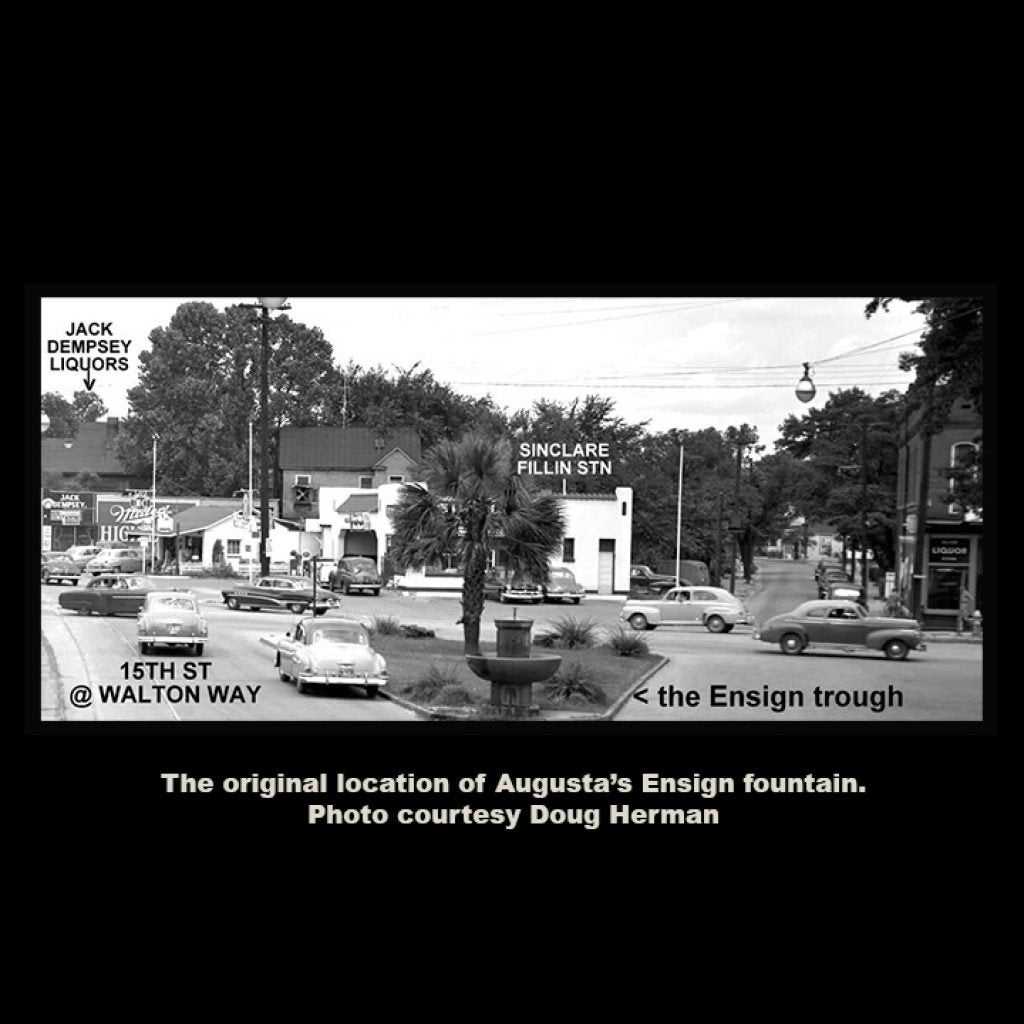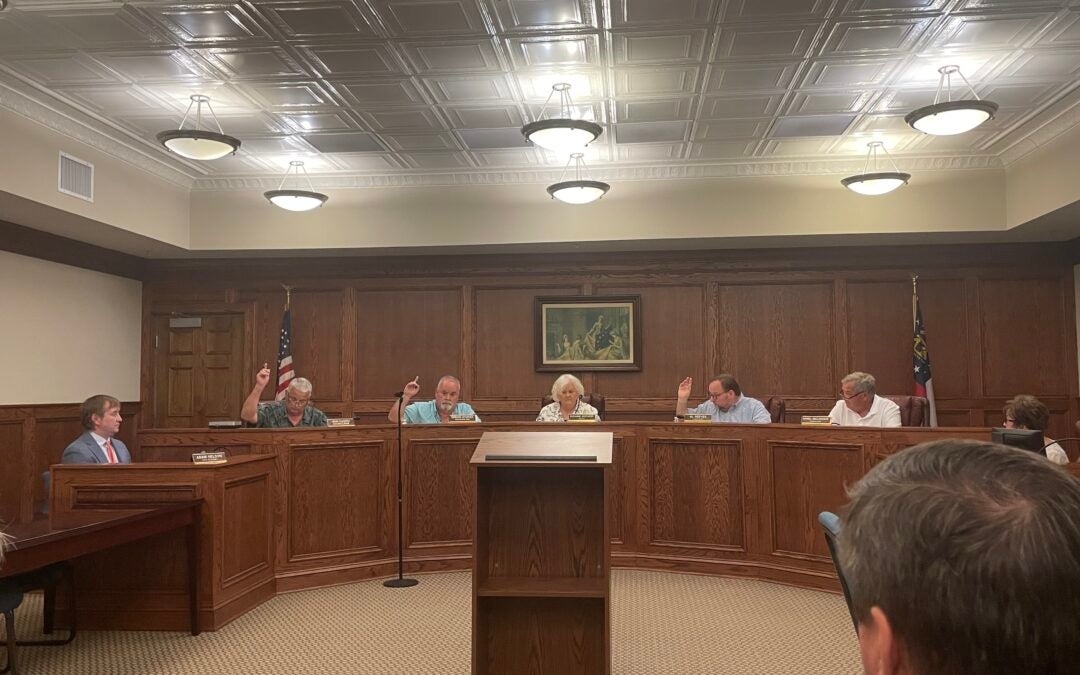Tucked away on the lawn of the Old Medical College of Georgia building sits a curious granite object surrounded by bushes. At first glance, people might think it is an oversized bird bath or perhaps a quirky piece of modern art.
However, the polished granite object is not a sculpture. It is an Ensign fountain, and it has an interesting story.
Hermon Lee Ensign was born in 1849 and grew up to be a newspaperman. By 1870, Ensign was promoted to manager of a small weekly news journal in Carbondale, Penn., the Alliance. According to the Vicksburg (Mississippi) Post, the newspaper was “mildly religious and widely humanitarian.”
MORE: Little Feat brings its 45th anniversary tour of Waiting for Columbus to the Miller
Ensign was a tinkerer and refined the stereotype with a moveable base. A stereotype in printing is a mold of the handset original page that could be used to print from. That meant that expensive lead type could be used for other projects because the stereotype would be available for reprints. Ensign also developed an advertising gimmick that is still with us today.
Newspapers have engaged in various forms of advertising since their creation. Early print ads were almost always either a few printed lines or a hand-engraved image. Ensign came up with the idea of what he called “headline reading advertising.”
Rather than just using a few words to catch the reader’s eye, advertisers could purchase a headline and a short story. The headline would draw in the readers who at first would think it was a news story, but it would really be an advertisement in disguise.
Today, we would call that form of advertising an infomercial or click bait.
Ensign’s idea worked at his small weekly paper, and he later moved to New York and brought his headline reading advertising with him. By the time of his retirement, Ensign had amassed a fortune, according to the Vicksburg Post.
MORE: Moving ahead with North Augusta’s new public safety headquarters
Being an animal lover long before the creation of PETA, Ensign decided that he wanted his estate to go to the benefit of animals, particularly horses.
In the days before the adoption of the automobile, streets were mostly dirt, and riders on horseback had limited options for watering their horses. Some storefronts would keep watering troughs out front, but the dust kicked up in the air and heat of the summer would render the water fetid pretty quickly.
Cities began building fountains to solve the problem. According to EQUUS, a semi-scholarly website devoted to horses, some cities would even compete to see who could sport the most elaborate horse watering fountains.
Rather than go for opulence, Ensign developed a utilitarian fountain made of Maine granite. Humans could drink from the top spigots that were designed to resemble lion heads, horses could drink from the trough and the base allowed for dogs to get refreshment as well.
After Ensign’s death in 1899, his foundation, the National Humane Alliance, began building and distributing the fountains to cities all over the United States. According to the Vicksburg Post, around 100 of the unique fountains were created.
MORE: Augusta mayor’s divorce suit alleges adultery with staff member/consultant
Augusta’s fountain dates from June 1906, according to a story in the Augusta Chronicle that announced the city’s acceptance of the fountain.
Augusta’s Ensign fountain originally was located in the median at the intersection of Walton Way and 15th Streets.

The Ensign fountains, donated to cities in 44 states, would not be in service for very long. According to EQUUS, outbreaks of the equine disease glanders led city leaders across the nation to consider the fountains to be dangerous because glanders can be spread from horses to humans.
Veterinarians hotly contested the removal of fountains, stating that as long as the water had a continuous flow, it was safe for both humans and horses. City leaders generally paid the fountains no mind ,and most of the fountains were either destroyed or simply plugged up.
Such a controversy would not matter for long, though. At the same time, the automobile was beginning to replace horses as transportation and the fountains became obsolete.
Augusta’s Ensign fountain remained in place at least until the 1960s when the intersection it rested upon was redesigned. By that time, most motorists likely had no idea what the granite piece was once used for.
Thankfully, Augusta did not demolish the fountain, but rather it was moved to the lawn of the Old Medical College where it rests today with the help of a garden club leader, Mrs. Rodney Cohen.
…And that is something you might not have known.
Scott Hudson is the senior reporter for The Augusta Press. Reach him at scott@theaugustapress.com












